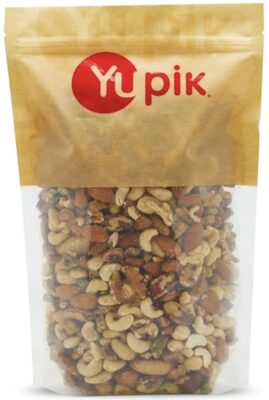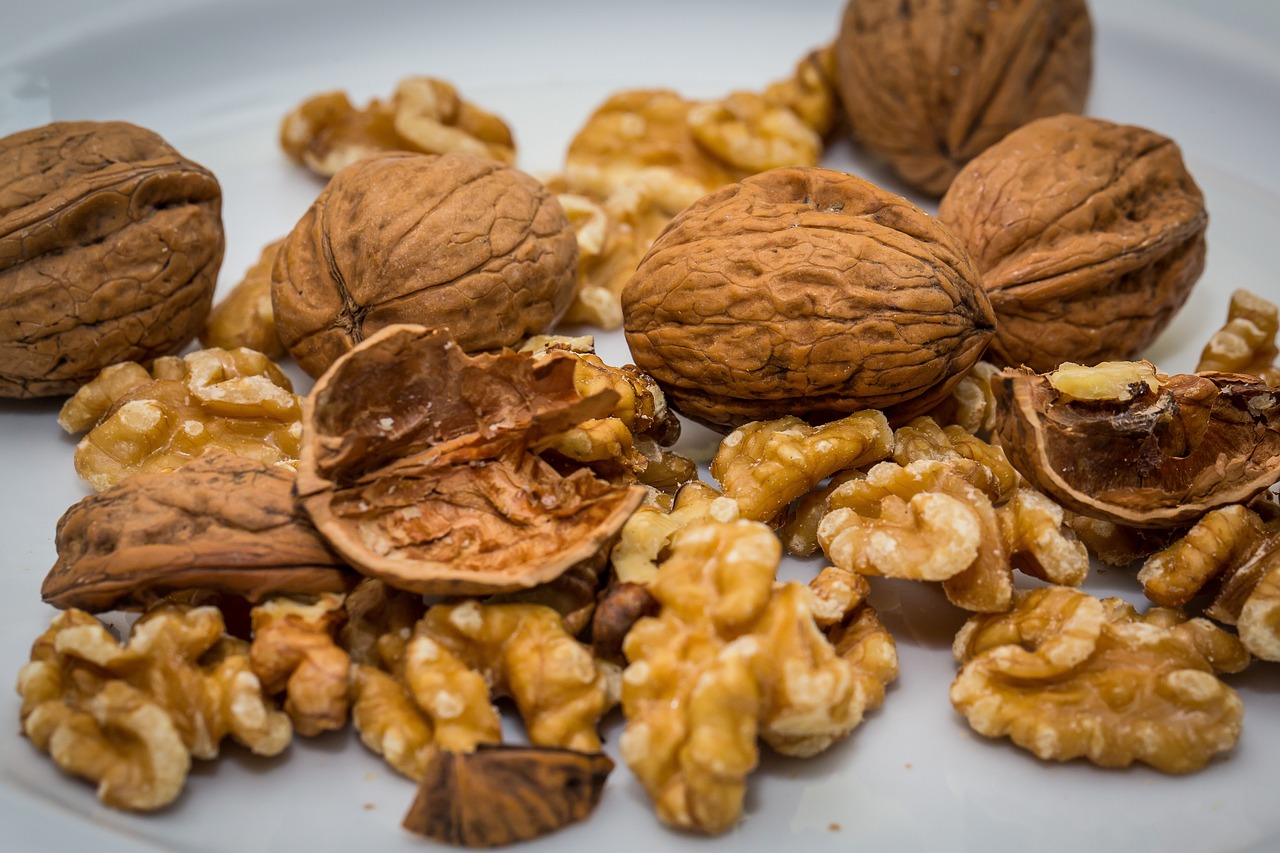Tree nuts are nutritional powerhouses packed with flavor and health benefits. From the ever-popular almond and walnut to the more exotic Brazil nut, these versatile ingredients can be enjoyed in countless ways. But with so many varieties and conflicting information about portion sizes, how can you incorporate tree nuts into your diet for optimal health? This guide explores the fascinating world of tree nuts, delving into their nutritional content, recommended serving sizes, and tips for incorporating them into your meals and snacks.
What Exactly Are Tree Nuts?
Unlike peanuts, which are technically legumes, tree nuts grow on trees. They come in a wide variety of shapes, sizes, and textures, each offering a unique flavor profile. Some of the most common tree nuts include:
- Almonds
- Brazil nuts
- Cashews
- Hazelnuts (filberts)
- Macadamia nuts
- Pecans
- Pistachios
- Walnuts
These nutritional gems boast an impressive array of health benefits. Let’s delve deeper into the reasons why you should consider adding tree nuts to your diet.
Nutritional Powerhouse: The Benefits of Tree Nuts
Tree nuts are a concentrated source of essential nutrients, making them a valuable addition to a balanced diet. Here’s a breakdown of some key benefits they offer:
- Healthy fats: Tree nuts are rich in unsaturated fats, particularly monounsaturated and polyunsaturated fats. These “good” fats can help lower LDL (“bad”) cholesterol levels while raising HDL (“good”) cholesterol, promoting heart health [1].
- Protein: Tree nuts are a good source of plant-based protein, making them a great option for vegetarians and vegans. Protein is essential for building and repairing tissues, promoting satiety, and supporting muscle growth.
- Fiber: Tree nuts are a good source of dietary fiber, which aids digestion, promotes gut health, and can help regulate blood sugar levels.
- Vitamins and minerals: Tree nuts are a treasure trove of essential vitamins and minerals, including Vitamin E, magnesium, manganese, copper, and potassium. These micronutrients play crucial roles in various bodily functions, from maintaining strong bones and muscles to supporting the immune system.
Here’s a table summarizing the nutritional content of some popular tree nuts per ounce (28 grams) serving [2]:
| Tree Nut | Calories | Fat (g) | Protein (g) | Fiber (g) | Magnesium (mg) | Potassium (mg) |
|---|---|---|---|---|---|---|
| Almonds | 164 | 14 | 6 | 3.5 | 80 | 164 |
| Brazil nuts | 187 | 19 | 6.5 | 1.3 | 80 | 164 |
| Cashews | 157 | 12 | 5 | 1.5 | 80 | 163 |
| Hazelnuts | 180 | 16 | 4.2 | 2.7 | 68 | 161 |
| Macadamia nuts | 204 | 15 | 2.2 | 2.4 | 120 | 158 |
| Pecans | 190 | 20 | 3 | 2.7 | 80 | 101 |
| Pistachios | 159 | 13 | 6 | 3 | 80 | 667 |
| Walnuts | 185 | 18 | 4.4 | 2.7 | 44 | 178 |
It’s important to note that these values can vary slightly depending on the specific nut and its processing method.
How Much Should You Eat? Daily Recommendations for Tree Nuts
While tree nuts are undeniably nutritious, moderation is key. Due to their high calorie content, it’s important to be mindful of portion sizes. The recommended daily intake of tree nuts varies depending on your overall calorie needs and dietary goals.
- The Dietary Guidelines for Americans recommend consuming 1.5 to 2 ounces of nuts, seeds, and soy products per day [3]. This translates to roughly a handful of nuts, depending on the size of the nut.
- For those following a calorie-restricted diet, a smaller serving of around 1 ounce (28 grams) of tree nuts may be more appropriate.
Here are some tips for measuring portion sizes:
- Use a small measuring cup or food scale to ensure accuracy.
- Visualize the serving size – a handful is generally a good starting point, but adjust based on the size of the nut.
- Pre-portion individual servings in small containers to avoid overindulging.
Raw vs. Roasted: Unveiling the Best Way to Enjoy Tree Nuts
With so many options available, you might wonder: should you eat tree nuts raw or roasted? Both options offer unique advantages and disadvantages:
Raw Tree Nuts:
- Advantages:
- Retain a higher level of heat-sensitive nutrients like Vitamin E and healthy fats.
- Offer a more natural and intense flavor.
- May be slightly lower in calories due to the absence of added oils used in roasting.
- Disadvantages:
- Can be tougher in texture and more difficult to digest for some people.
- May contain enzyme inhibitors that can interfere with nutrient absorption. Soaking raw nuts before consumption can help deactivate these inhibitors.
- More susceptible to spoilage due to higher moisture content.
Roasted Tree Nuts:
- Advantages:
- Generally have a more appealing taste and softer texture, making them easier to chew and digest.
- Roasting can enhance the flavor of certain nuts.
- Often more readily available and convenient than raw nuts.
- Disadvantages:
- May lose some heat-sensitive nutrients like Vitamin E during the roasting process.
- Roasted nuts with added salt or oil can be higher in sodium and unhealthy fats.
Here’s how to choose the best option for you:
- If maximizing nutrient content is your priority, opt for raw nuts and soak them before consumption to improve digestibility.
- If you prefer a softer texture and a more pronounced flavor, roasted nuts are a good choice. Just be mindful of added sodium and unhealthy fats. Look for unsalted, dry-roasted varieties for the healthiest option.
Ultimately, the best way to enjoy tree nuts depends on your personal preferences and dietary goals.Experiment with both raw and roasted options to find what works best for you.
Beyond the Basics: Creative Ways to Include Tree Nuts in Your Diet
Tree nuts are incredibly versatile ingredients that can be enjoyed in countless ways. Here are some ideas to incorporate them into your meals and snacks:
- Snacking: Enjoy a handful of raw or roasted nuts as a healthy and satisfying snack.
- Salads: Add chopped nuts to salads for a delicious crunch and a protein boost.
- Yogurt parfaits: Sprinkle chopped nuts over yogurt parfaits for added texture and flavor.
- Trail mix: Make your own trail mix by combining nuts, seeds, dried fruit, and whole grains for a portable and nutritious snack.
- Baking: Use nut flours like almond flour or hazelnut flour for gluten-free baking.
- Spreads: Make your own nut butter at home using a food processor.
- Sauces: Add a creamy texture and nutty flavor to sauces by using nut butters like cashew butter or peanut butter (technically a legume, but often included for its similar uses).
- Dipping: Blend nuts with herbs and spices for a flavorful dip for vegetables or crackers.
- Cheese platters: Offer a variety of nuts on cheese platters for a gourmet touch.
- Main courses: Crusted fish or chicken with nuts adds a delicious and crunchy topping.
 By incorporating these versatile ingredients into your diet, you can reap the numerous health benefits that tree nuts offer while enjoying their delightful taste and texture. Here’s an example of highly-rated mixed nuts available on amazon – click here*.
By incorporating these versatile ingredients into your diet, you can reap the numerous health benefits that tree nuts offer while enjoying their delightful taste and texture. Here’s an example of highly-rated mixed nuts available on amazon – click here*.
Remember: Moderation is Key
While tree nuts are a healthy and delicious addition to your diet, it’s important to remember that they are also calorie-dense. Enjoy them in moderation as part of a balanced diet that includes plenty of fruits,vegetables, whole grains, and lean protein.
By following these tips and understanding the nutritional value of tree nuts, you can confidently incorporate them into your meals and snacks, unlocking their health benefits and adding a touch of culinary delight to your day.


